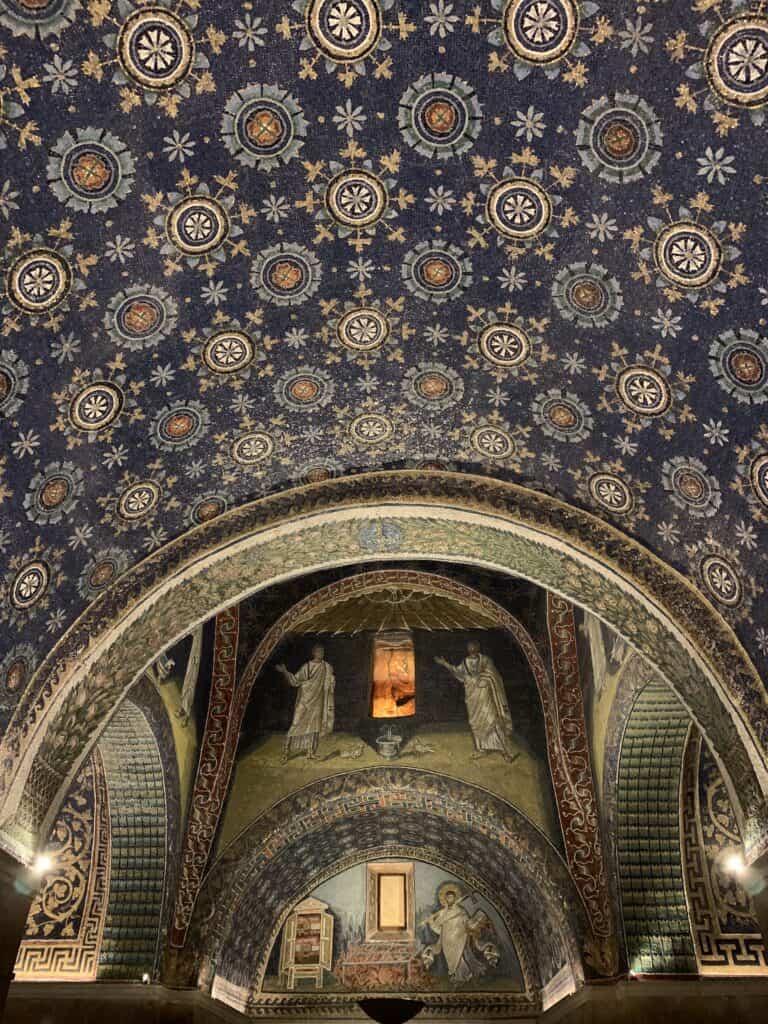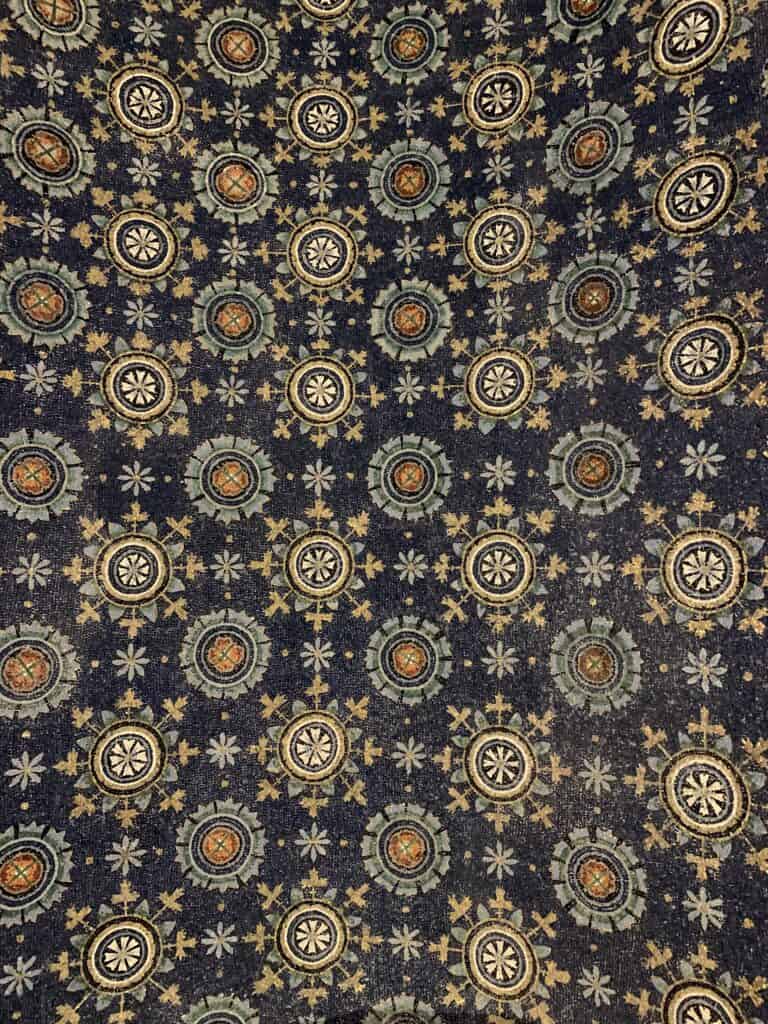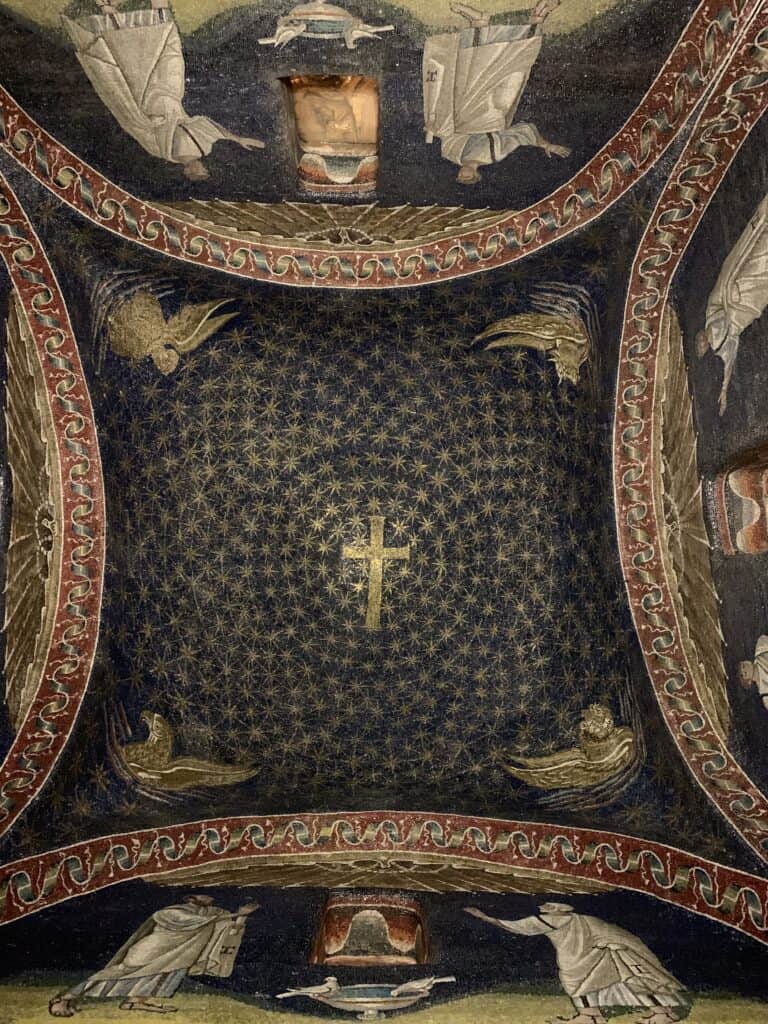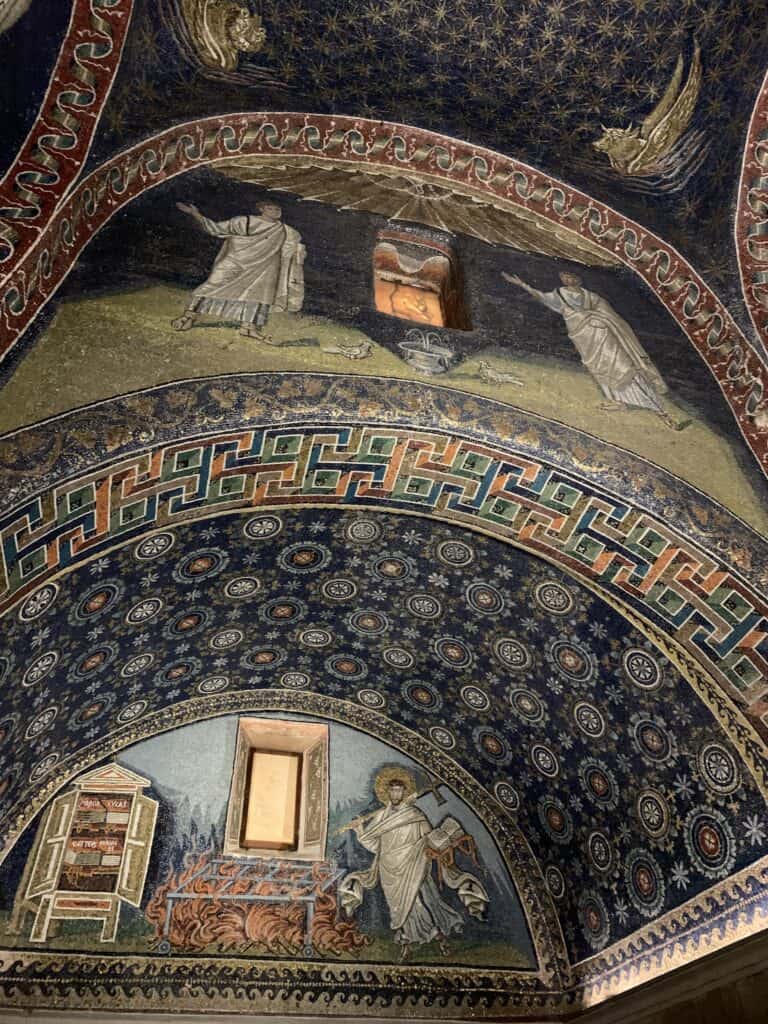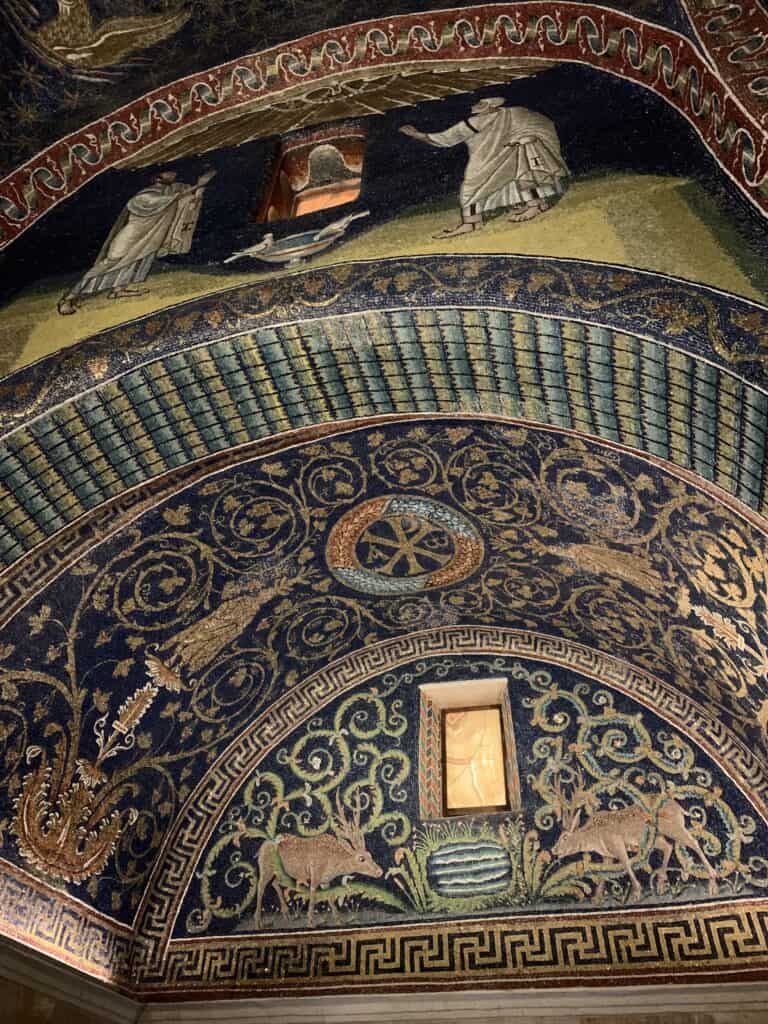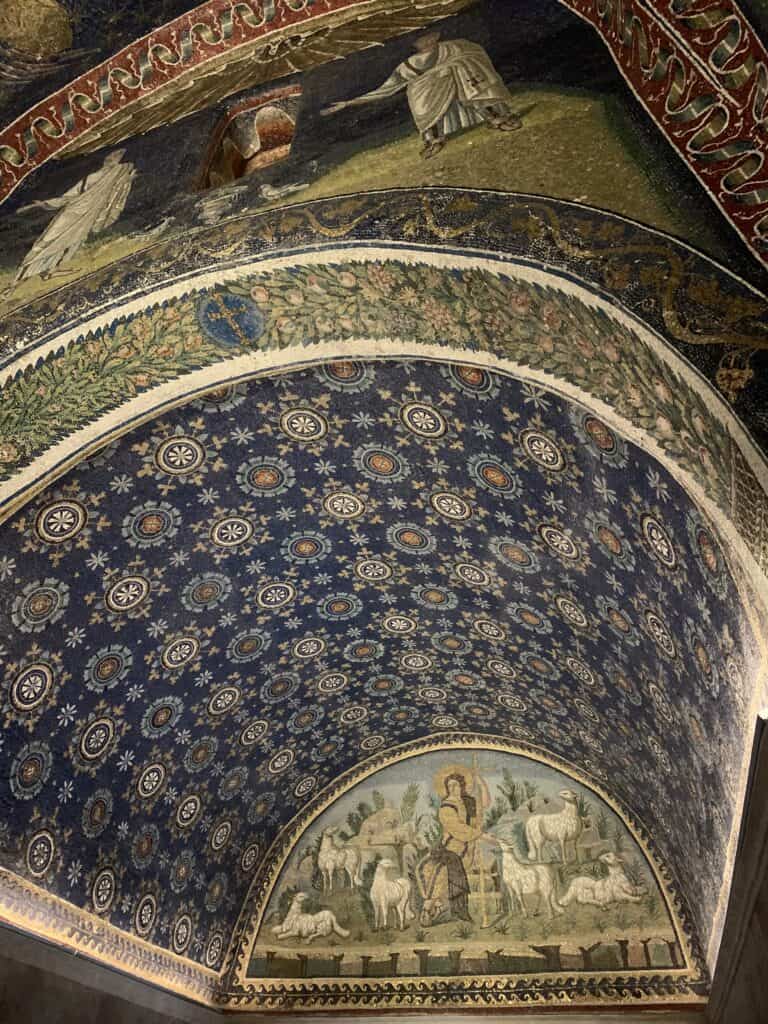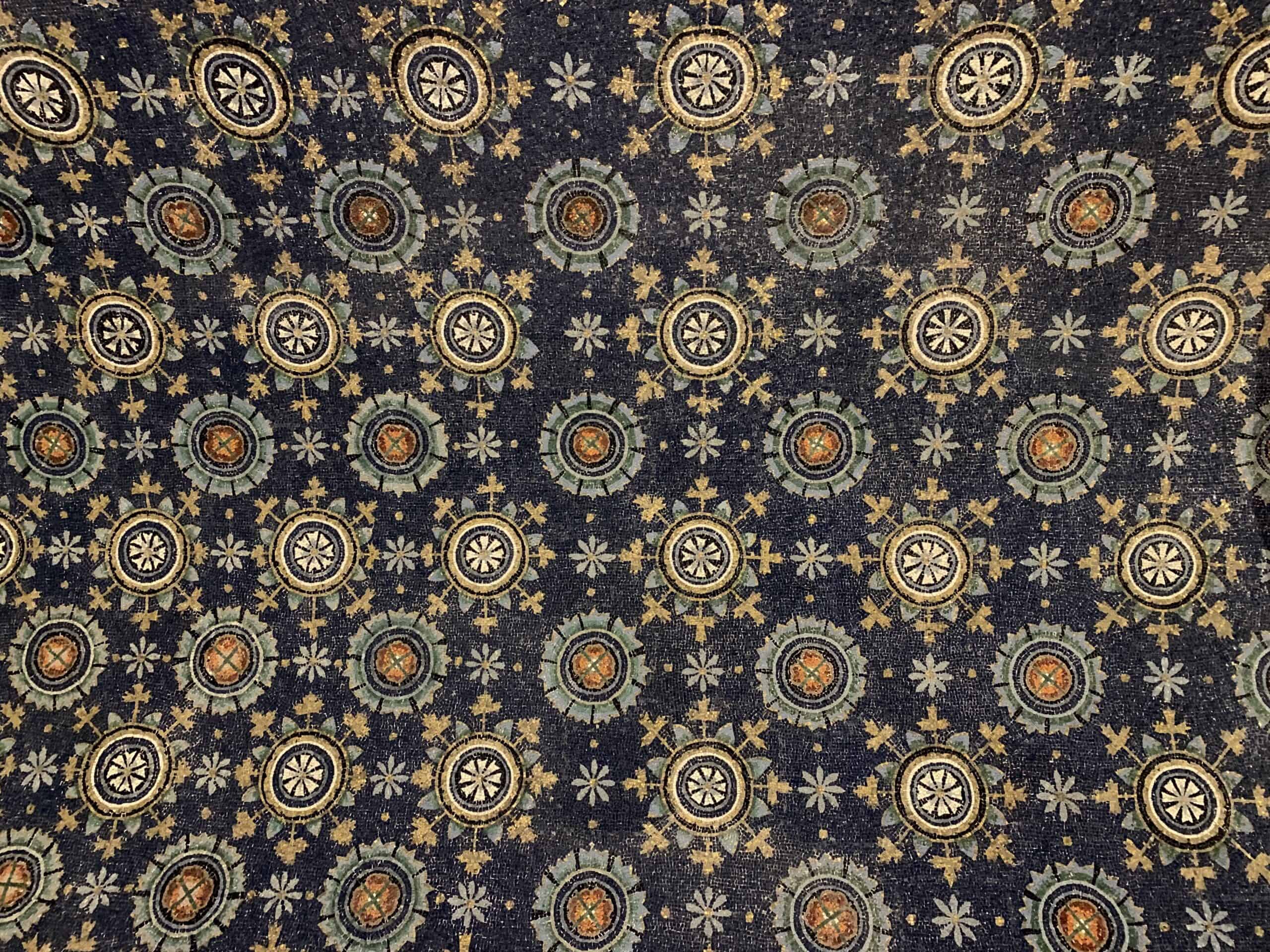
The Mausoleum of Galla Placidia was built in the fifth century and is located near the Basilica of San Vitale.
The plan of the Mausoleum of Galla Placidia is a Latin cross and has an external brick facing.
Mosaic decorations inside are among the oldest in all of Ravenna, and are in an excellent state of preservation.
Among the mosaics of the dome is the cross placed in a vault of stars on a blue background, a recurring theme in medieval art, which stretches towards the four pendentives.
On the lunettes of the dome are represented the Apostles and Saints.
The representation of the Good Shepherd is located in the lunette above the entrance, while in the opposite lunette is depicted the martyrdom of St. Lawrence on the grill, with a cross on his shoulder and an open book in his hand. In the side lunettes there are representations of deer and doves, while the barrel vaults and arches exhibit fruit-bearing and floral themed decorations.
As happened with several other ancient buildings in Ravenna, this mausoleum also sank due to subsidence.
Tradition has it that Galla Placidia, daughter of Theodosius and Empress of the Western Roman Empire on behalf of her son Valentinian III, had this structure built in order to serve as a mausoleum for herself, for her husband Constantius III and for her brother Honorius. In reality this theory has never been confirmed, indeed the official documents make no mention of these facts.
The Mausoleum of Galla Placidia was included in the list of Italian World Heritage Sites by UNESCO in 1996.
I thank the Opera Religion of the Diocese of Ravenna for its hospitality and availability.


